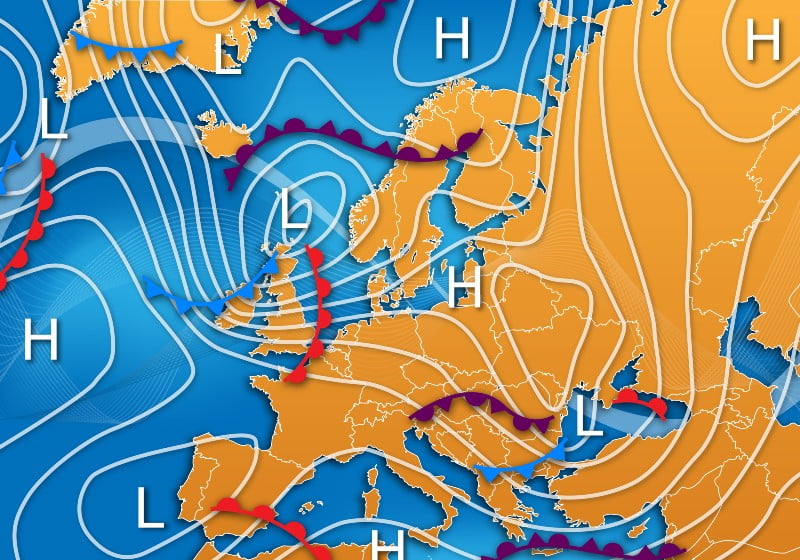
Climate stripes Image source: Show your stripes2
The text below is simplified from FAQ3.1 of the IPCC’s 2021 WG1 report1.
How do we Know Humans are Responsible for Climate Change?
The dominant role of humans in driving recent climate change is clear. This conclusion is based on a synthesis (mixture) of information from multiple lines of evidence, including direct observations of recent changes in Earth’s climate; analyses of tree rings, ice cores, and other long-term records documenting how the climate has changed in the past; and computer simulations based on the fundamental physics that govern the climate system.
Climate is influenced by a range of factors
There are two main natural drivers of variations in climate on timescales of decades to centuries.
- The first is variations in the Sun’s activity, which alter the amount of incoming energy from the sun.
- The second is large volcanic eruptions, which increase the number of small particles (aerosols) in the upper atmosphere that reflect sunlight and cool the surface—an effect that can last for several years.
The main human drivers of climate change are increases in the atmospheric concentrations of greenhouse gases and of aerosols from burning fossil fuels, land use change (e.g. deforestation) and other sources. The greenhouse gases absorb infrared radiation (heat) near the surface, warming the climate. Aerosols, like those produced naturally by volcanoes, on average cool the climate by increasing the reflection of sunlight.
Evidence for human activity causing recent change.
Multiple lines of evidence demonstrate that human drivers are the main cause of recent climate change. The current rates of increase of the concentration of the major greenhouse gases (carbon dioxide, methane and nitrous oxide) are unprecedented over at least the last 800,000 years.
Climate models
The basic physics underlying the warming effect of greenhouse gases on the climate has been understood for more than a century, and our current understanding has been used to develop the latest generation climate models.
They include a representation of the ocean, atmosphere, sea ice, land and vegetation and the main processes important in driving climate and climate change.

Source:IPCC3
Results consistently show that such climate models can only reproduce the observed warming when including the effects of human activities, in particular the increasing concentrations of greenhouse gases.
These climate models show a dominant warming effect of greenhouse gas increases, which has been partly offset by the cooling effect of increases in atmospheric aerosols.
By contrast, simulations that include only natural processes such as variations in the activity of the Sun and emissions from large volcanoes are not able to reproduce the observed warming.
The fact that simulations including only natural processes show much smaller temperature increases indicates that natural processes alone cannot explain the strong rate of warming observed.
Extra evidence
An additional line of evidence for the role of humans in driving climate change comes from comparing the rate of warming observed over recent decades with that which occurred prior to human influence on climate. Evidence from tree rings and other paleoclimate records shows that the rate of increase of global surface temperature observed over the past fifty years exceeded that which occurred in any previous 50-year period over the past 2000 years.
Taken together, this evidence shows that humans are the dominant cause of observed global warming over recent decades.
Humans and climate change – comprehension exercise
Using the article make a list of all of the evidence that is available for proving what is responsible for climate change.
- What are the natural drivers of climate change?
- What are the main human drivers of climate change?
- What is a climate model and how do they work?
- Using graph a, make two statements about the recent warming in the context of:
- i) the last 2000 years
- ii) the last 100,000 years?
- Using graph b which situation from the climate models matches the observed temperature change?
- What do the results of the climate models show when trying to explain why temperatures have increased in recent decades?
- What other evidence is there to support that shown by the climate models?
- What should governments and policymakers do to respond to this evidence?
Sources
- ipcc.ch. 2021. AR6 WGI Report Frequently Asked Questions. [online] Available at: https://www.ipcc.ch/report/ar6/wg1/downloads/faqs/IPCC_AR6_WGI_FAQs.pdf [Accessed 28 November 2021]. P. 14
- Analytics, M., 2021. Show Your Stripes. [online] Showyourstripes.info. Available at: https://showyourstripes.info/s/globe [Accessed 28 November 2021].
- IPCC, 2021: Climate Change 2021: The Physical Science Basis. Contribution of Working Group I to the Sixth Assessment Report of the Intergovernmental Panel on Climate Change [Masson-Delmotte, V., P. Zhai, A. Pirani, S.L. Connors, C. Péan, S. Berger, N. Caud, Y. Chen, L. Goldfarb, M.I. Gomis, M. Huang, K. Leitzell, E. Lonnoy, J.B.R. Matthews, T.K. Maycock, T. Waterfield, O. Yelekçi, R. Yu, and B. Zhou (eds.)]. Cambridge University Press. In Press. P.8. Accessed 28th November 2021 at Sixth Assessment Report (ipcc.ch)




